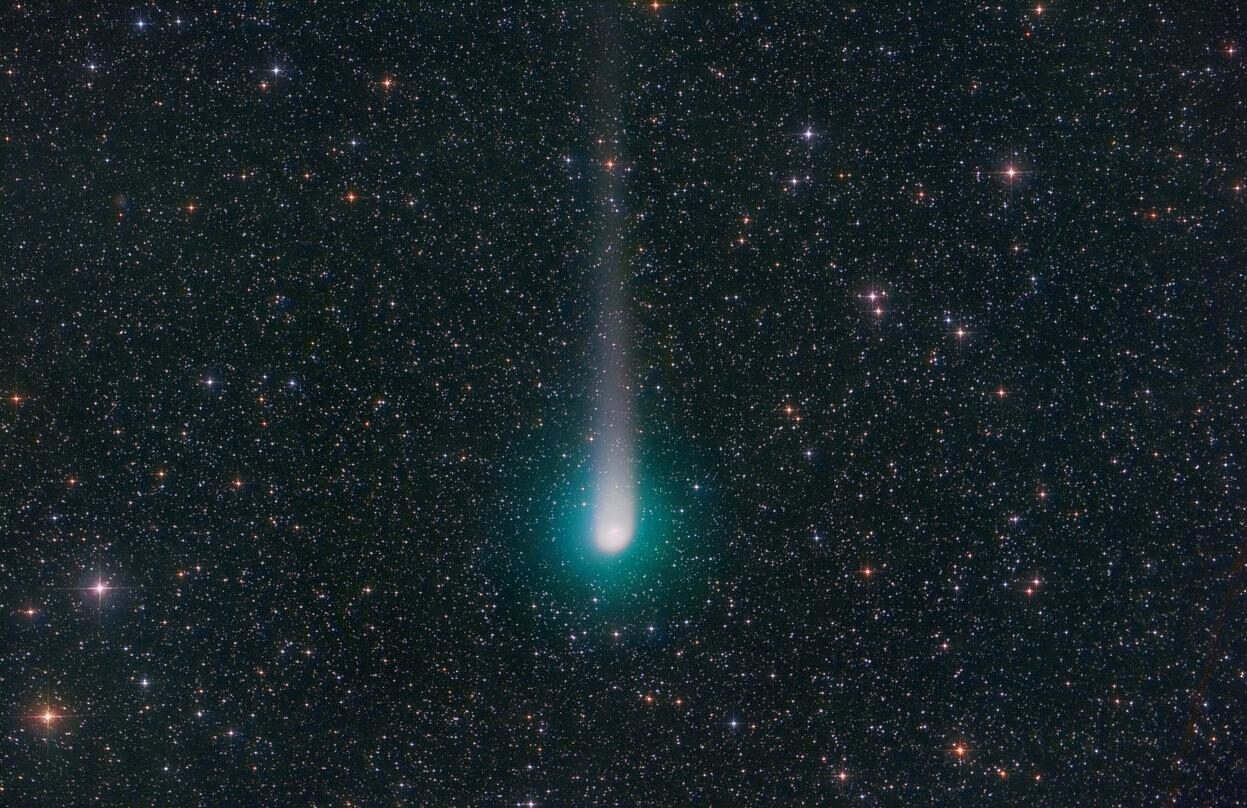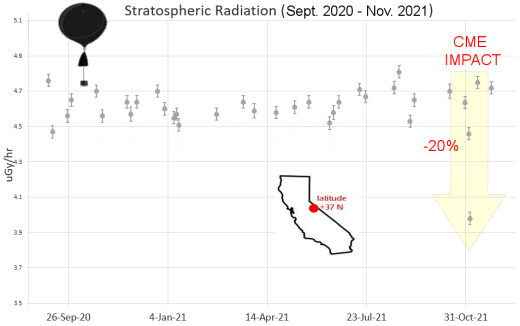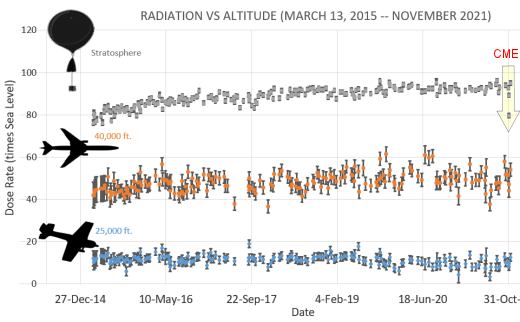
Taken by Michael Jaeger on June 25, 2022 @ Martinsberg Austria
"This is a 22-minute exposure with my 16-inch telescope," says Jaeger. "The comet was about 9th magnitude."
Comet K2 caused a sensation when it was discovered in 2017. At first, it appeared to be one of the biggest comets in modern history, with a nucleus as much as 160 km wide. Hubble Space Telescope observations have since downsized it to 18 km. That's still big (typical comet nuclei measure 1 to 3 km), but not a record setter. K2 is comparable in size to Halley's Comet.
The comet will make its closest approach to Earth (1.8 AU away) on July 14th, brightening to 7th or 8th magnitude. This is too dim to see with the naked eye, but an easy target for backyard telescopes. A good time to look is now before the full Moon of July 13th interferes. Comet K2 may be found high in the midnight sky in the constellation Ophiuchus.
Sky maps: June 29, 30, July 1. Additional resources: current coordinates, 3D orbit, light curve.
More images: from Roland Fichtl of Engelhardsberg, Germany; from José J. Chambó of Valencia, Spain; from Fritz Helmut Hemmerich of Alhama de Granada, Spain; from Alessandro Bianconi of Dolianova, Italy; from Paul Robinson in the Sierra Nevada mountains of California; from Lionel Majzik of Hakos, Khomas, Namibia
Cosmic Rays in the Atmosphere
SPACE WEATHER BALLOON DATA:
Almost once a week, Spaceweather.com and the students of Earth to Sky Calculus fly space weather balloons to the stratosphere over California. These balloons are equipped with sensors that detect secondary cosmic rays, a form of radiation from space that can penetrate all the way down to Earth's surface. Our monitoring program has been underway without interruption for 7 years, resulting in a unique dataset of in situ atmospheric measurements.
Latest results (Nov. 2021): Our balloons have just measured a sudden drop in atmospheric radiation. It happened during the strong geomagnetic storms of Nov. 3-4, 2021.
Here are the data:
This is called a "Forbush decrease," named after American physicist Scott Forbush who studied cosmic rays in the early 20th century. It happens when a CME from the sun sweeps past Earth and literally pushes cosmic rays away from our planet. Radiation from deep space that would normally pepper Earth's upper atmosphere is briefly wiped out.
We have measured Forbush decreases before. For example, here's one from Sept. 2014. The Forbush Decrease of Nov. 3-4, 2021, was the deepest in the history of our 7-year atmospheric monitoring program. Radiation levels in the stratosphere over California dropped nearly 20%, more than doubling the previous record from our dataset.
En route to the stratosphere, our sensors also pass through aviation altitudes, so we can sample radiation where planes fly. This plot shows how the Forbush decrease was restricted to the stratosphere; it did not affect lower levels of the atmosphere:
The dose rates shown above are expressed as multiples of sea level. For instance, we see that boarding a plane that flies at 25,000 feet exposes passengers to dose rates ~10x higher than sea level. At 40,000 feet, the multiplier is closer to 50x. The higher you fly, the more radiation you will absorb..
Who cares?
Cosmic rays are a surprisingly "down to Earth" form of space weather. They can seed clouds, trigger lightning, and penetrate commercial airplanes. According to a study from the Harvard T.H. Chan school of public health, crews of aircraft have higher rates of cancer than the general population. The researchers listed cosmic rays, irregular sleep habits, and chemical contaminants as leading risk factors. Somewhat more controversial studies (#1, #2, #3, #4) link cosmic rays with cardiac arrhythmias and sudden cardiac death.
Technical notes: The radiation sensors onboard our helium balloons detect X-rays and gamma-rays in the energy range 10 keV to 20 MeV. These energies span the range of medical X-ray machines and airport security scanners.Data points in the first graph ("Stratospheric Radiation") correspond to the peak of the Regener-Pfotzer maximum, which lies about 67,000 feet above central California. When cosmic rays crash into Earth's atmosphere, they produce a spray of secondary particles that is most intense at the entrance to the stratosphere. Physicists Eric Regener and Georg Pfotzer discovered the maximum using balloons in the 1930s and it is what we are measuring today.





Comment: See also: Comet Bernardinelli-Bernstein confirmed as largest ever observed, twice the size of Hale-Bopp
And check out SOTT radio's: